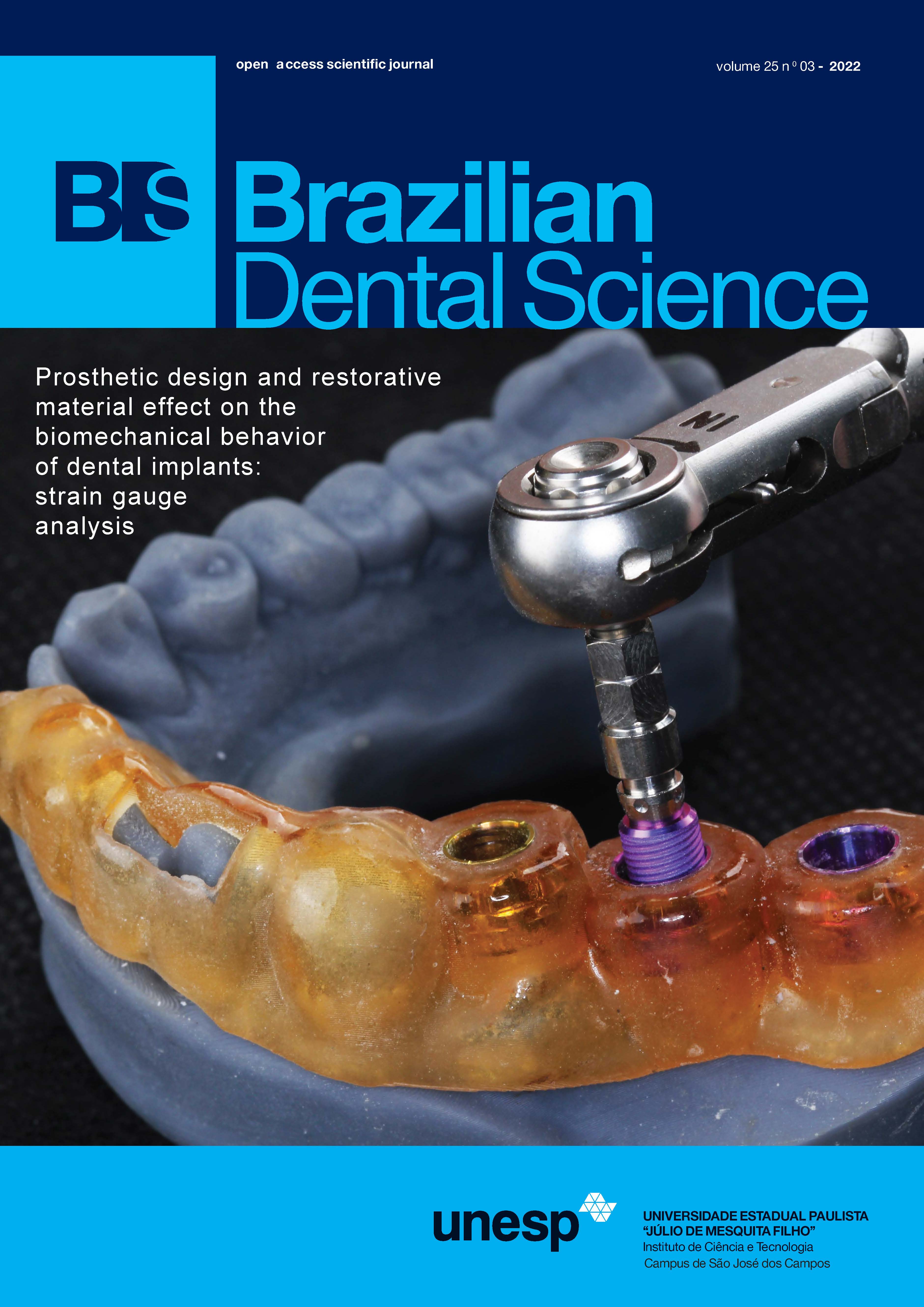The effect of adding ytterbium trifluoride on the radiopacity, compressive strength, setting time and bioactivity of biodentine: an in vitro study
DOI:
https://doi.org/10.4322/bds.2022.e3360Abstract
Objective: This study aimed to evaluate the radiopacity, compressive strength, setting time and bioactivity of
Biodentine after modification with Ytterbium Tri-Fluoride (YbF3) in three different concentrations. Material and
Methods: Radiopacity was determined using the equivalence in millimeters of aluminum (mm Al) from digital
radiographs. Compressive strength was evaluated using a universal testing machine. The initial and final setting
times were evaluated using Gillmore needle. The bioactive potential was evaluated using the environmental scanning
electron microscope (ESEM) connected with Energy Dispersive X-ray analysis (EDX) and X-ray Diffractometer
(XRD) at three different time intervals. pH was measured using a pH-meter. Data were analyzed using one-way
ANOVA followed by Tukey’s post hoc tests (P< 0.05). Results: Radiopacity of Biodentine with 2.5%, 5% and 7.5%
YbF3 was significantly higher than unmodified Biodentine (P < 0.05). Unmodified Biodentine showed the highest
mean compressive strength values compared to all other groups (p< 0.05). The addition of YbF3 to Biodentine has
extended the final setting time except for the 2.5% YbF3 group that showed no significant difference compared
to the control. All groups showed an alkaline pH at 28 days, ESEM coupled with EDX analysis showed evidence
of dense globules of calcium phosphate on the surface indicating enhancement of bioactivity. Conclusion: 2.5%
YbF3 can be a promising radiopacifying agent to Biodentine with improvement in radiopacity, bioactive potential
and maintaining the setting time and compressive strength at acceptable level as indicated by the ISO standards.
KEYWORDS
Ytterbium trifluoride; Radiopacity; Biodentine; Bioactivity.
Downloads
Downloads
Published
How to Cite
Issue
Section
License
Brazilian Dental Science uses the Creative Commons (CC-BY 4.0) license, thus preserving the integrity of articles in an open access environment. The journal allows the author to retain publishing rights without restrictions.
=================




























